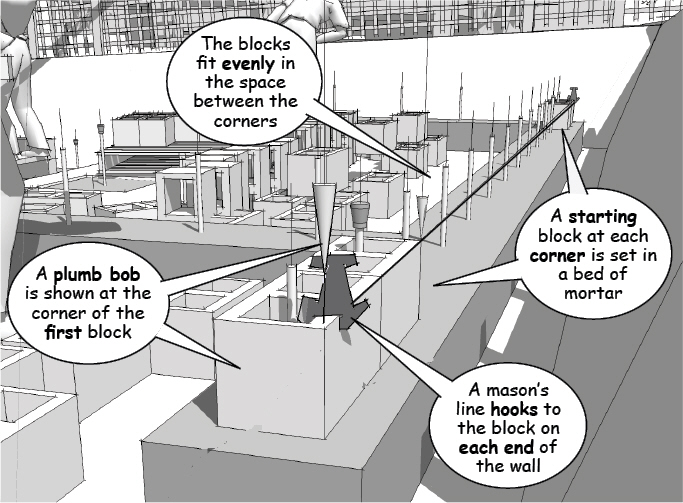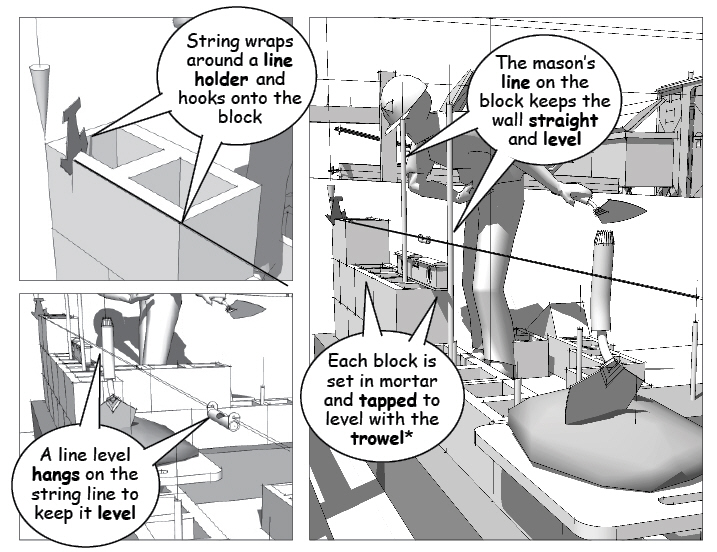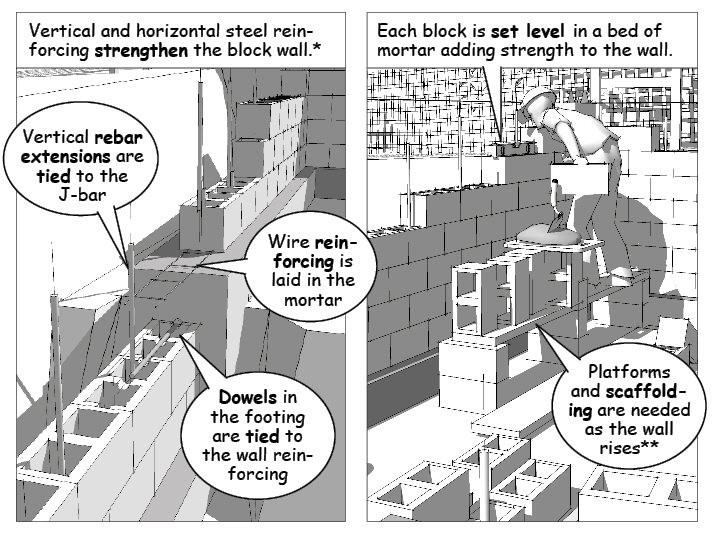Once the masonry materials and equipment are in place, the project is considered staged and ready for the next phase of the construction. Most superintendents will check the project just before their arrival to make sure everything is ready to go, no one wants to upset the masons before they even get started.
Teamwork
Depending on the size of the project, the masons will work in teams that include at least a journeyman and a person called a hod carrier or hoddie. Though often mistaken for a simple laborer, a good hod carrier is important to the flow of the work because block, brick, grout, and reinforcing have to be placed within reach of a journeyman or apprentice just as these materials are needed.

Depending on union rules, a master mason might only be important for complex details or to manage additional teams on larger projects. Residential foundations like this one would usually only need to be checked for progress or to coordinate the location of anchors, conduit, or plumbing sleeves that penetrate the stem wall.
Laying Block
A plumb bob is hung from the string line intersection to mark the corners and junctures of the stem walls. The dimensions of the wall should fit a standard 8” module so they can be put together without unnecessary cutting or trimming the concrete block.

If the lengths of the walls don’t match the size of the standard masonry units, block will have to be cut to fit into the wall’s construction. This adds to the cost of the foundation and creates a break in the joint pattern of the block that is often awkward to handle with a striking tool.

The masons start in the corners, bedding the blocks to bond with the concrete footing and leveling the first course with a laser or a line level while making sure the corners are square.

As they place the block, the J-bar coming out of the footing is fitted to the hollow core of the block, sometimes bending the rebar slightly to center the reinforcing. Additional lengths of vertical rebar are tied to the J-bar as the wall rises. The hollow cavities will then be filled with grout to stiffen the wall and bind it to the footing.

The top of the block or a hand level is struck with the trowel to seat the block into the mortar joint and any horizontal reinforcing that might be required. Joints are troweled flush or struck with a concave tool depending on project specifications.
Parging might also be applied in extremely wet conditions to provide a smoother surface for waterproof sealers. Platforms and scaffold make the work easier by bringing each course to a comfortable height. Guardrails are required for fall protection if the wall rises above limits set by construction safety codes.
(To be continued…)
---------------------------
The material presented in this series has been taken from our book, “How a House is Built: With 3D Construction Models” The book includes annotated illustrations, captioned text, videos, models, and the 2D Preliminaries.
 .
.
